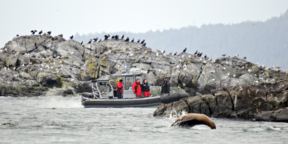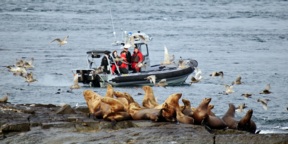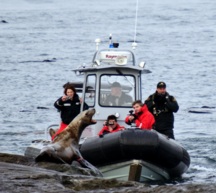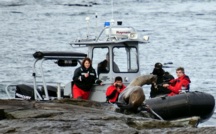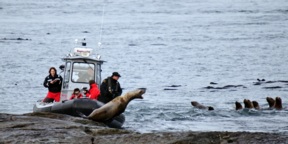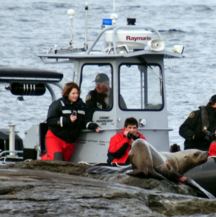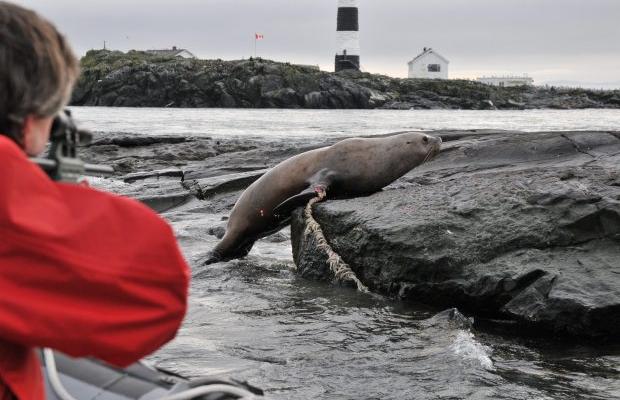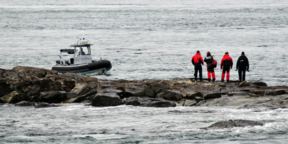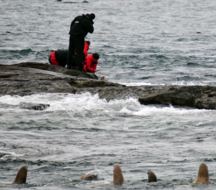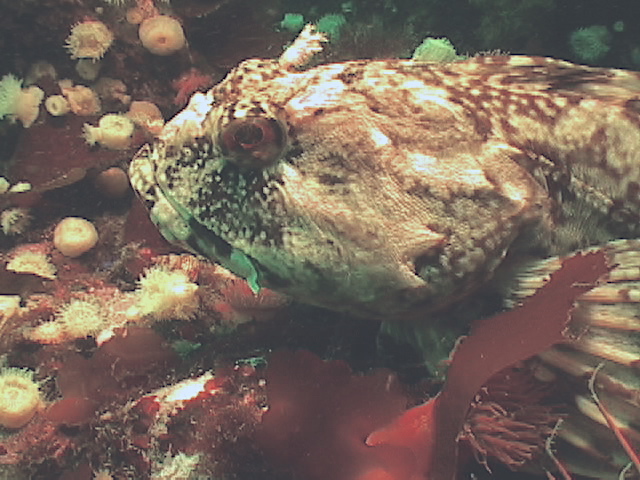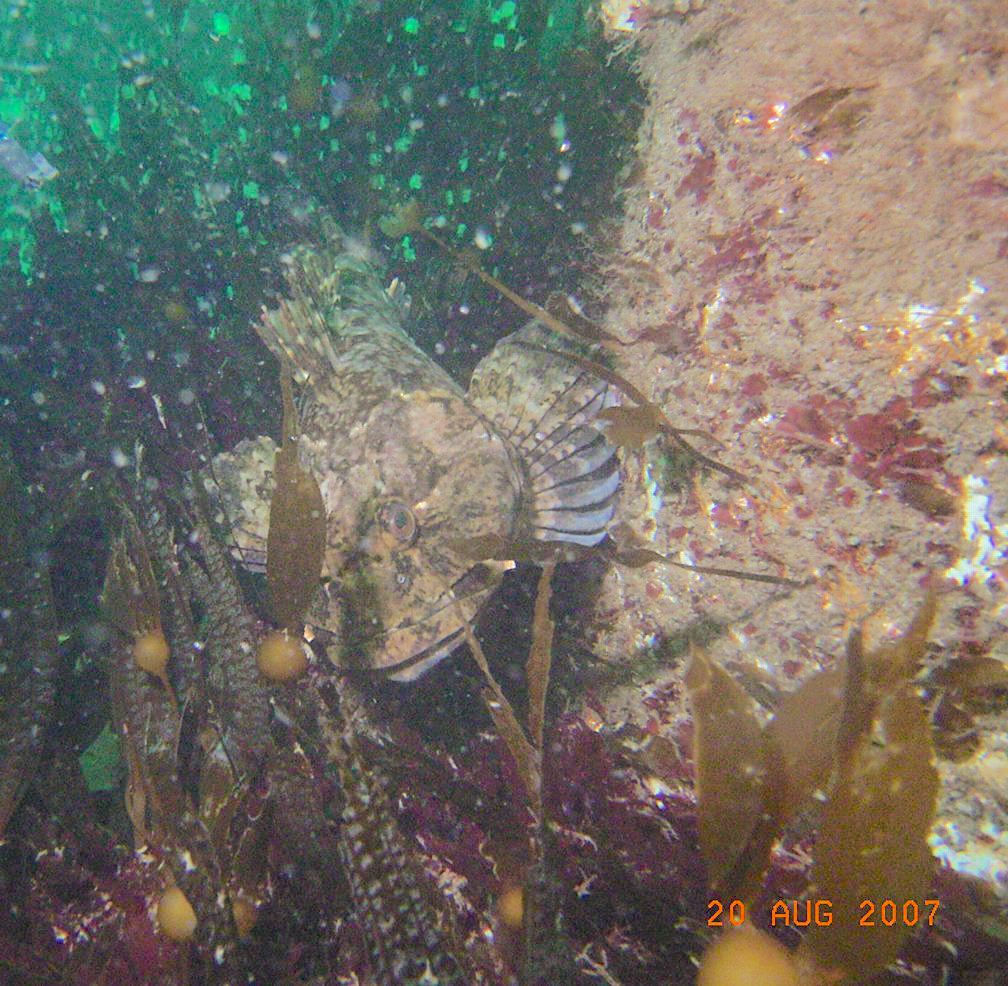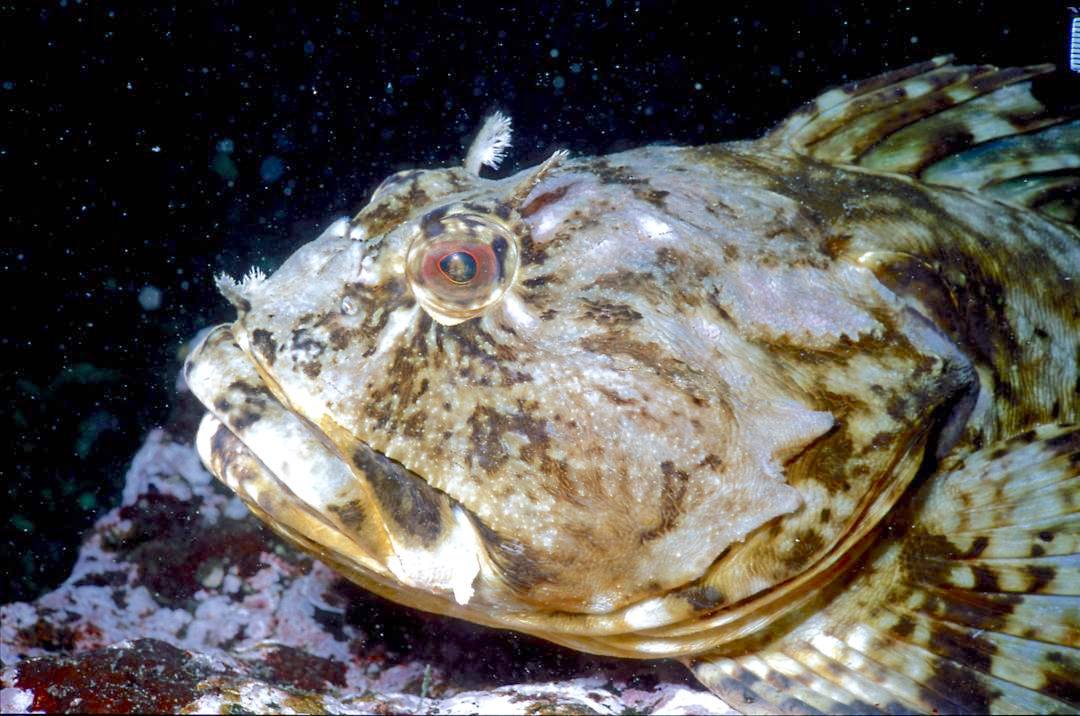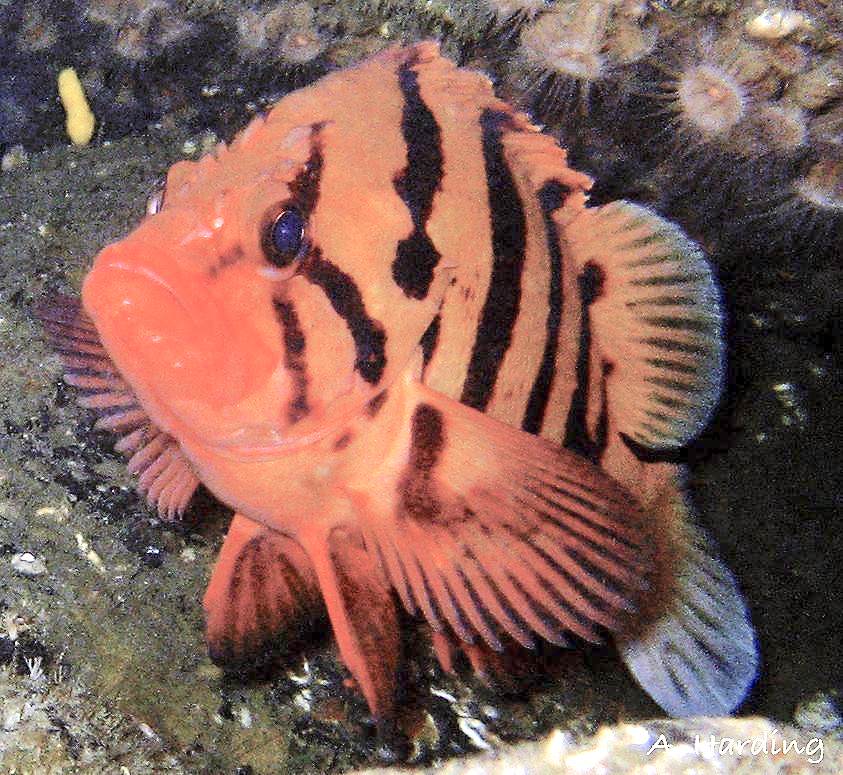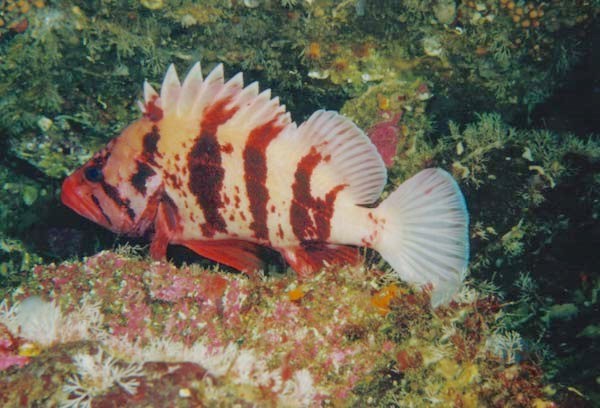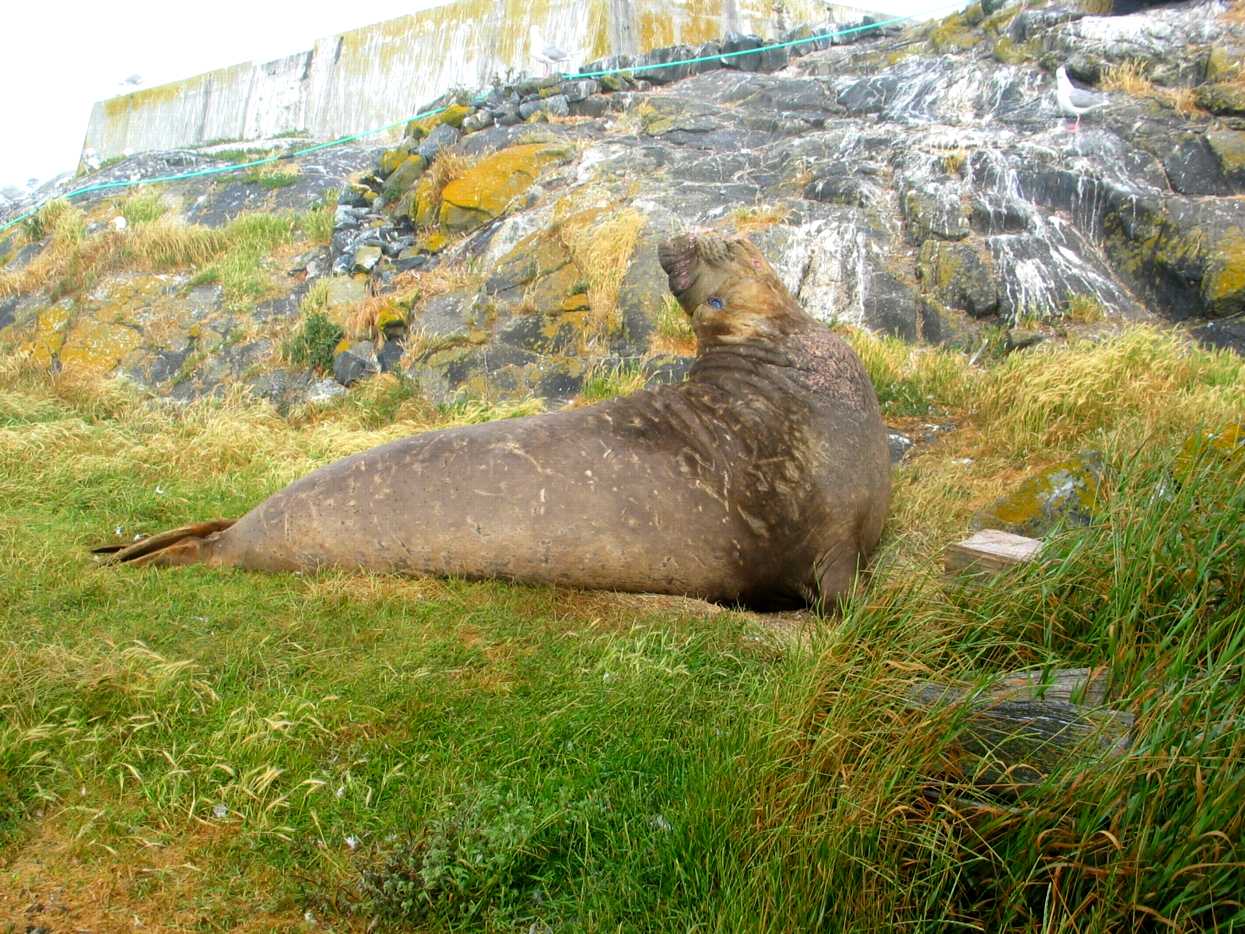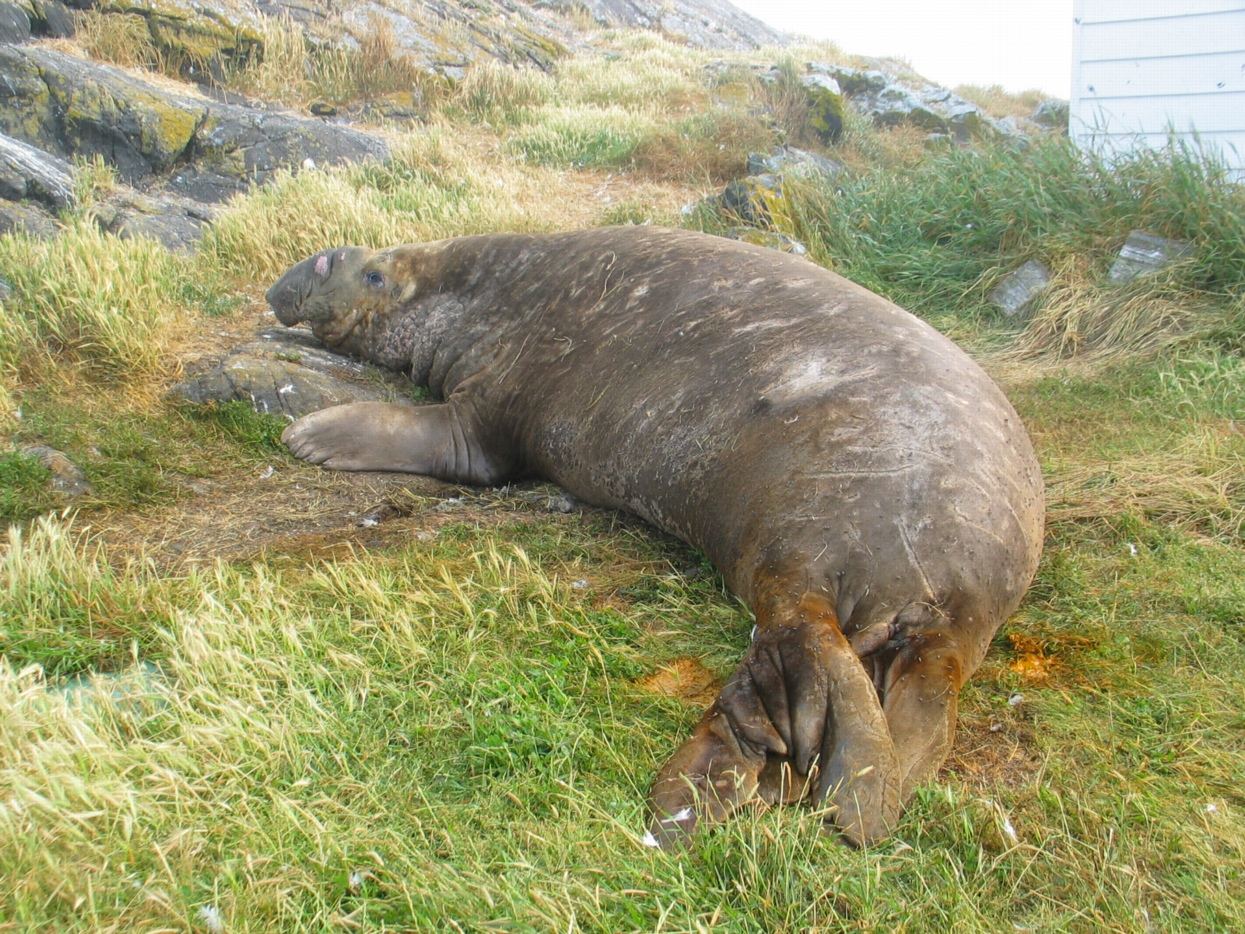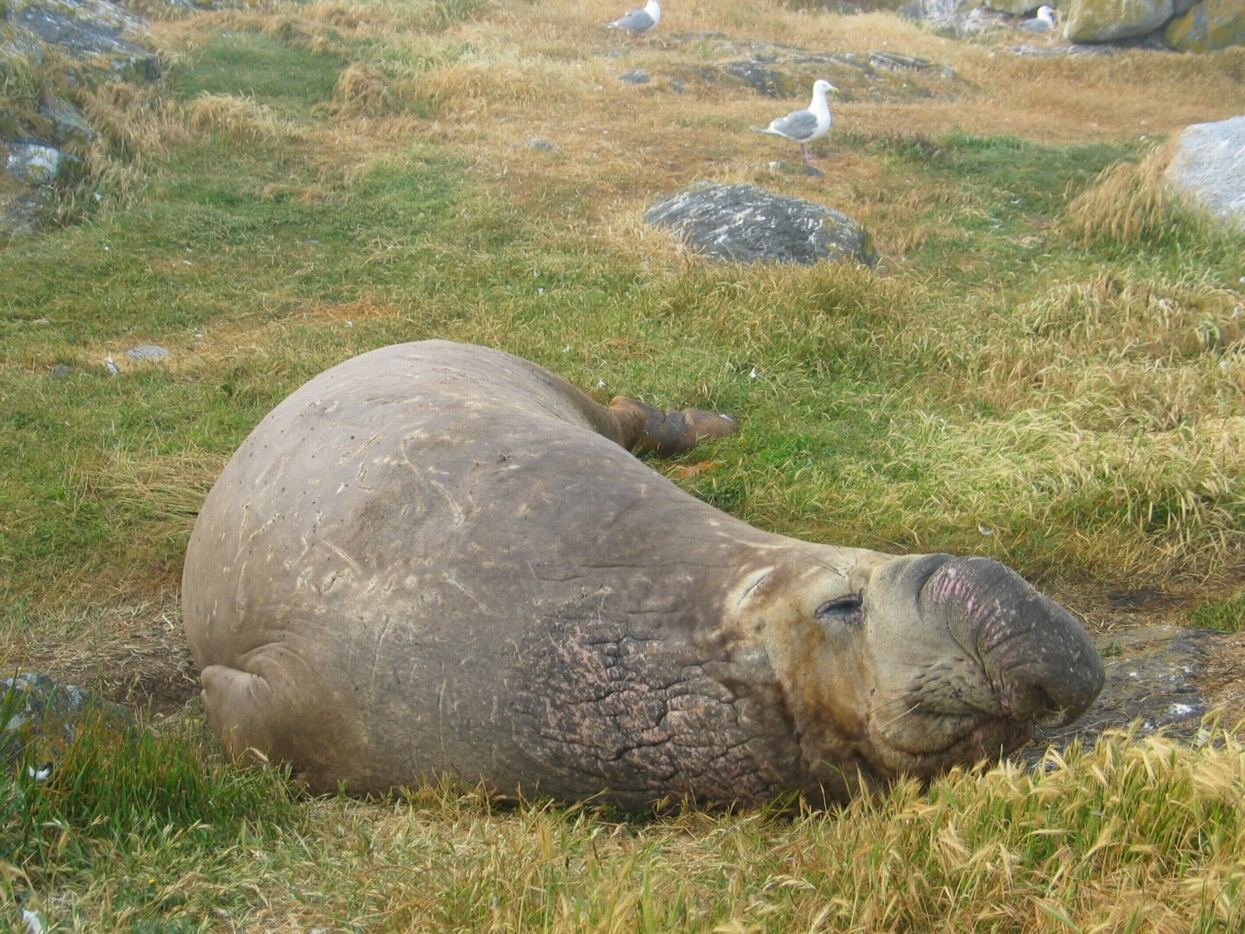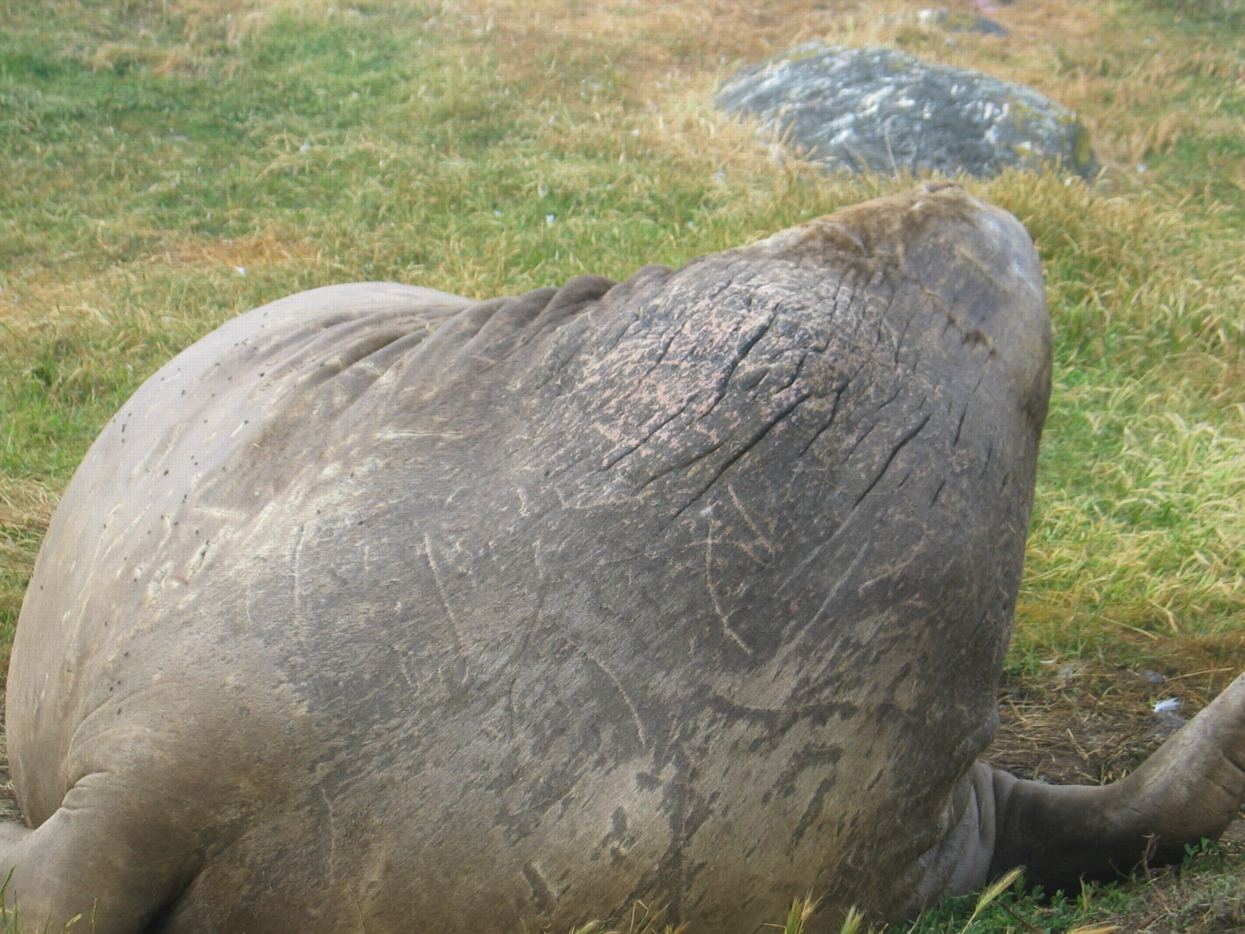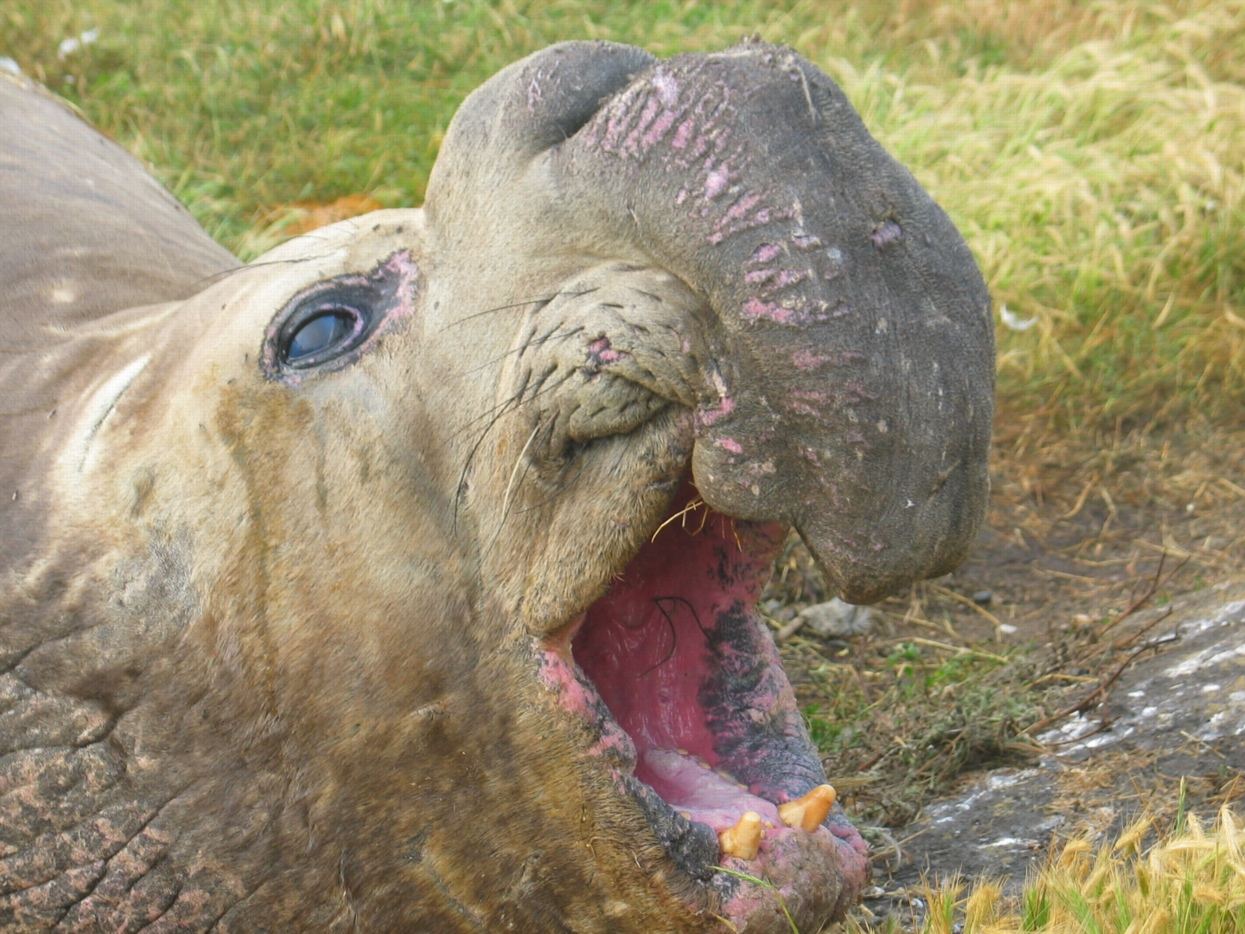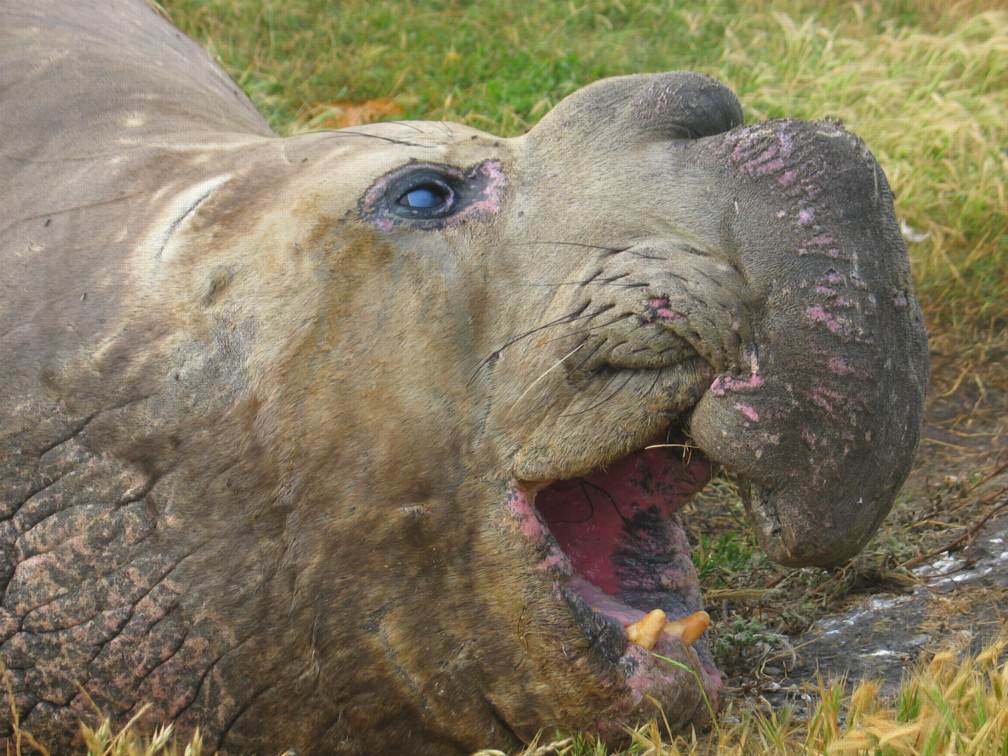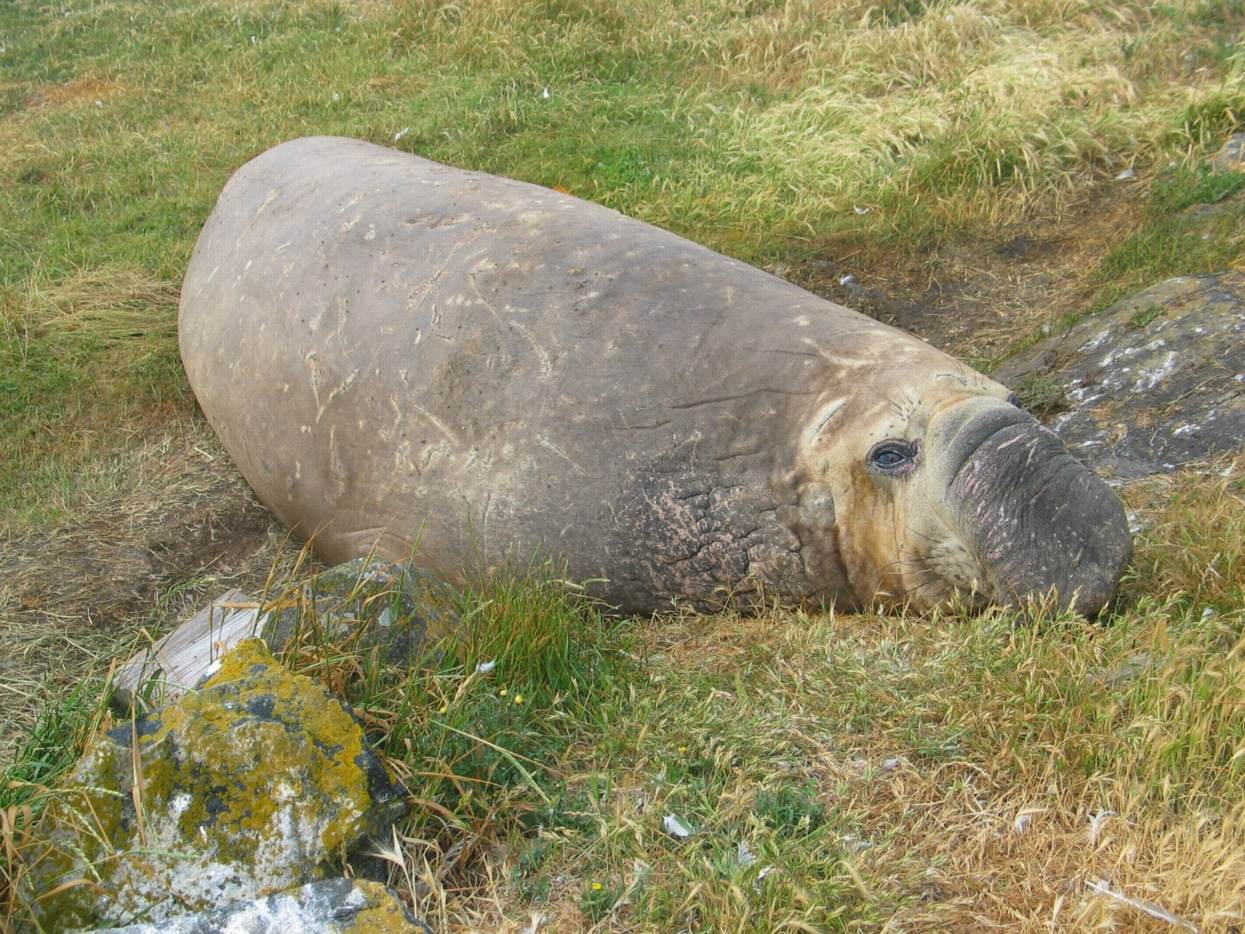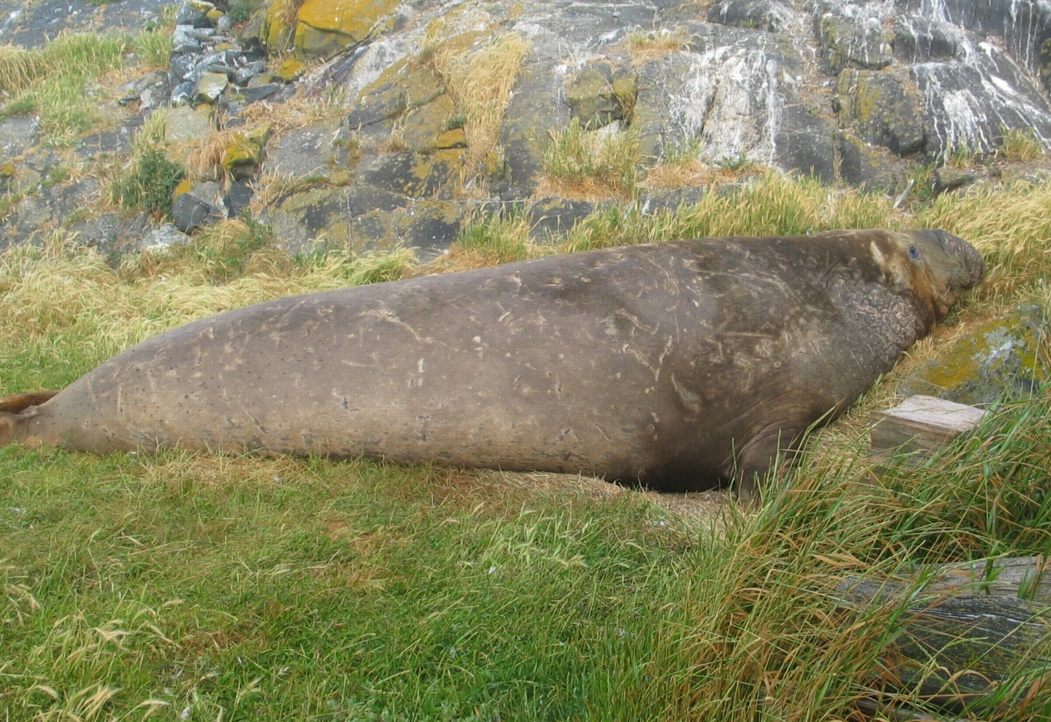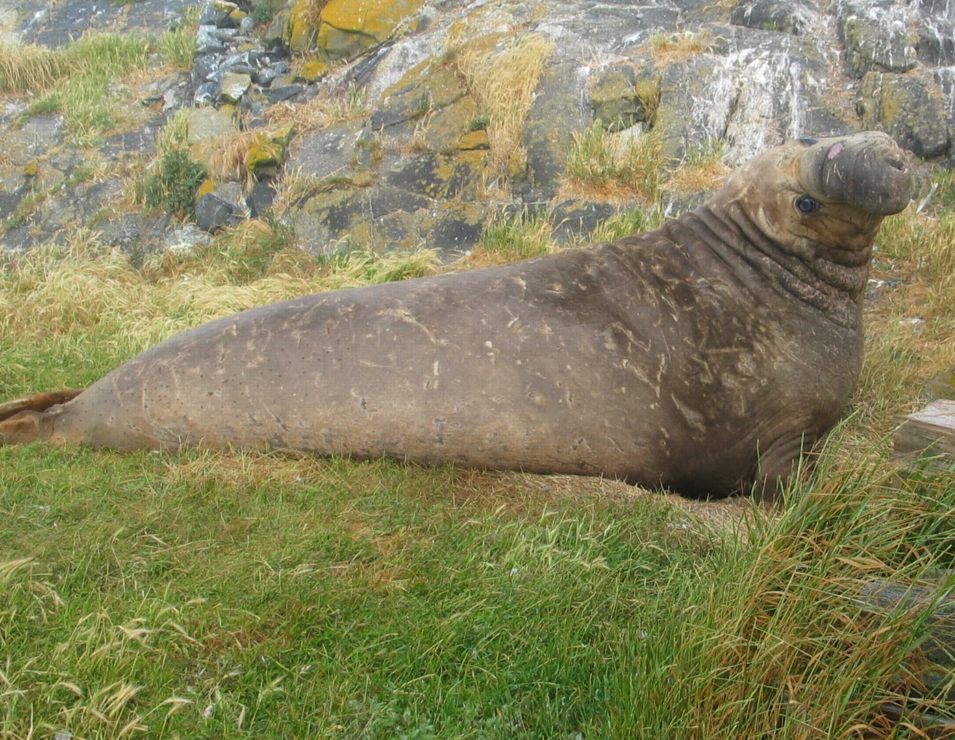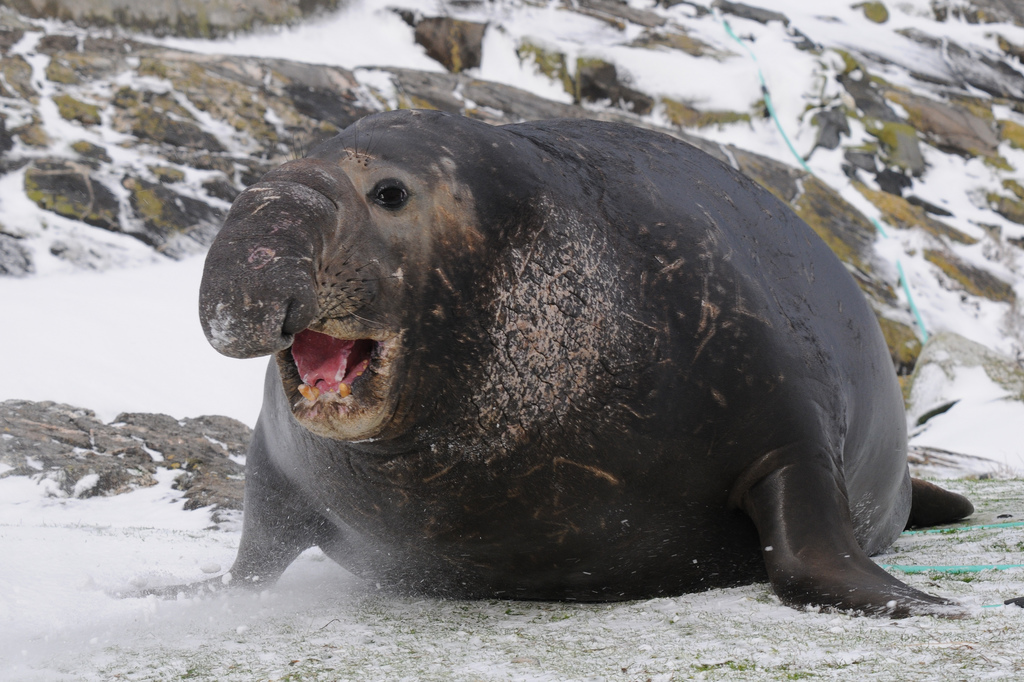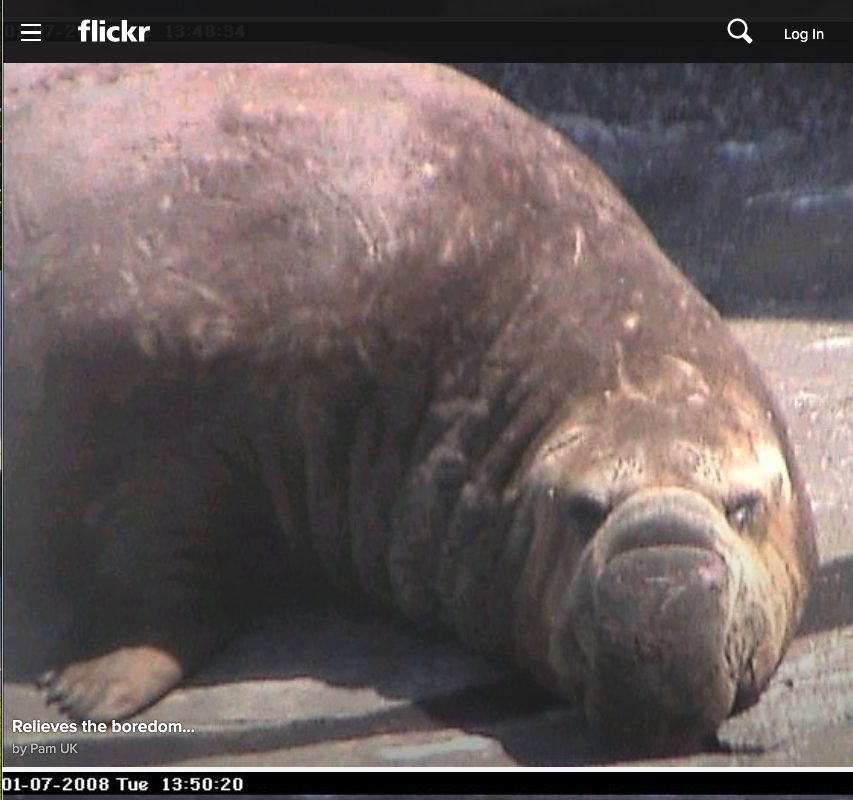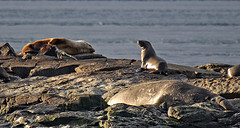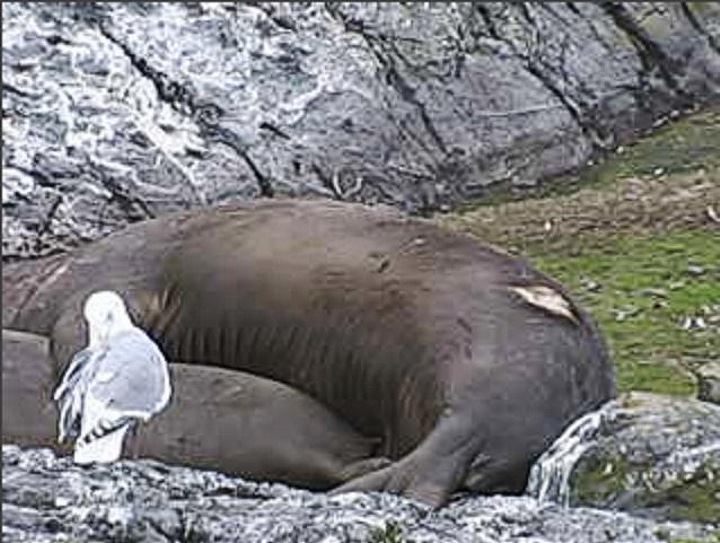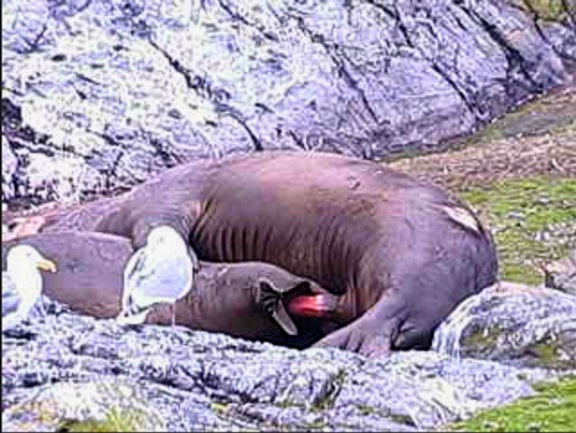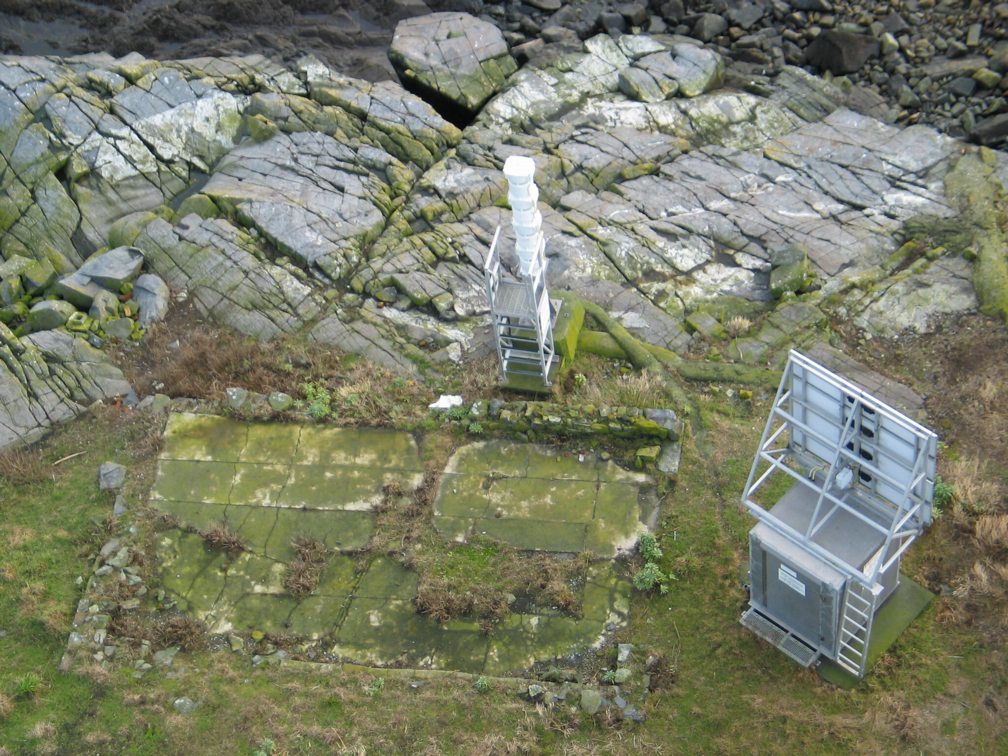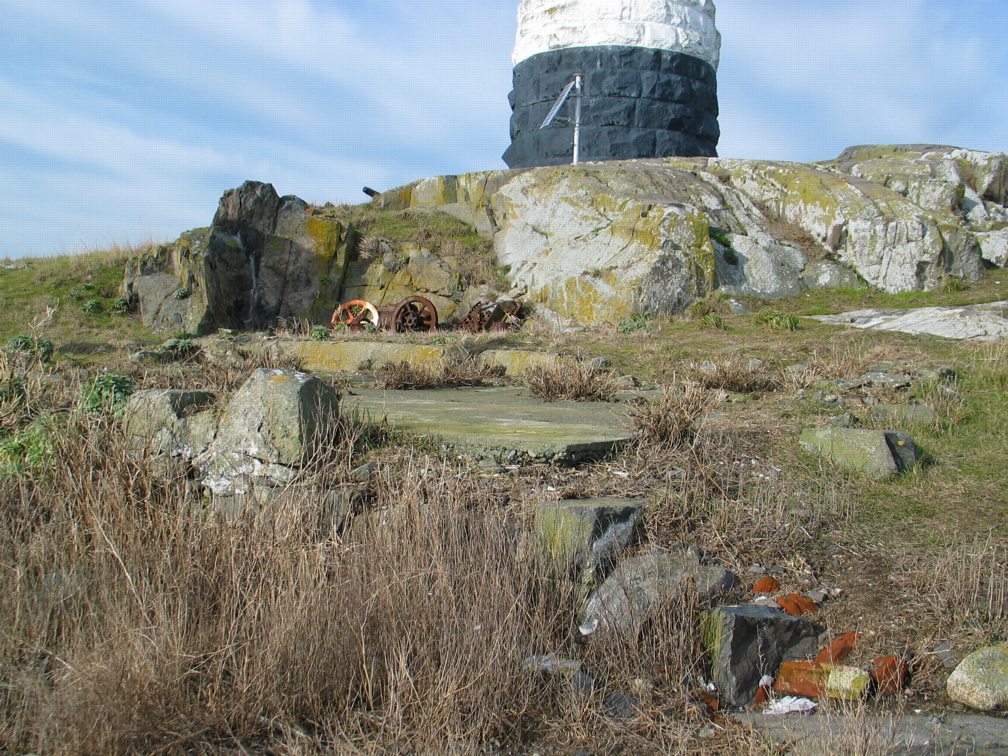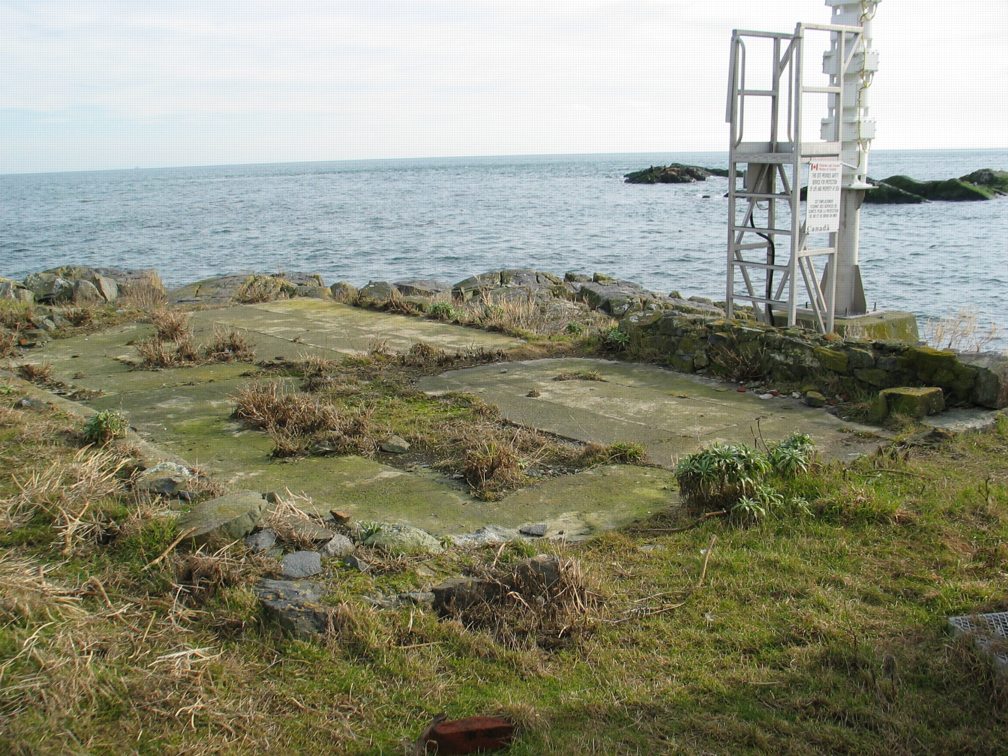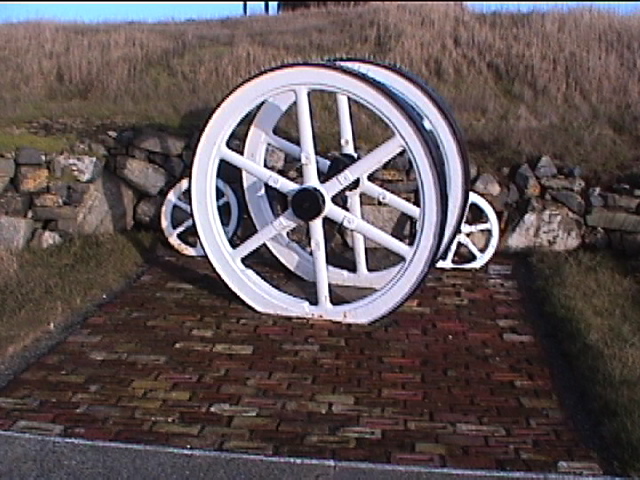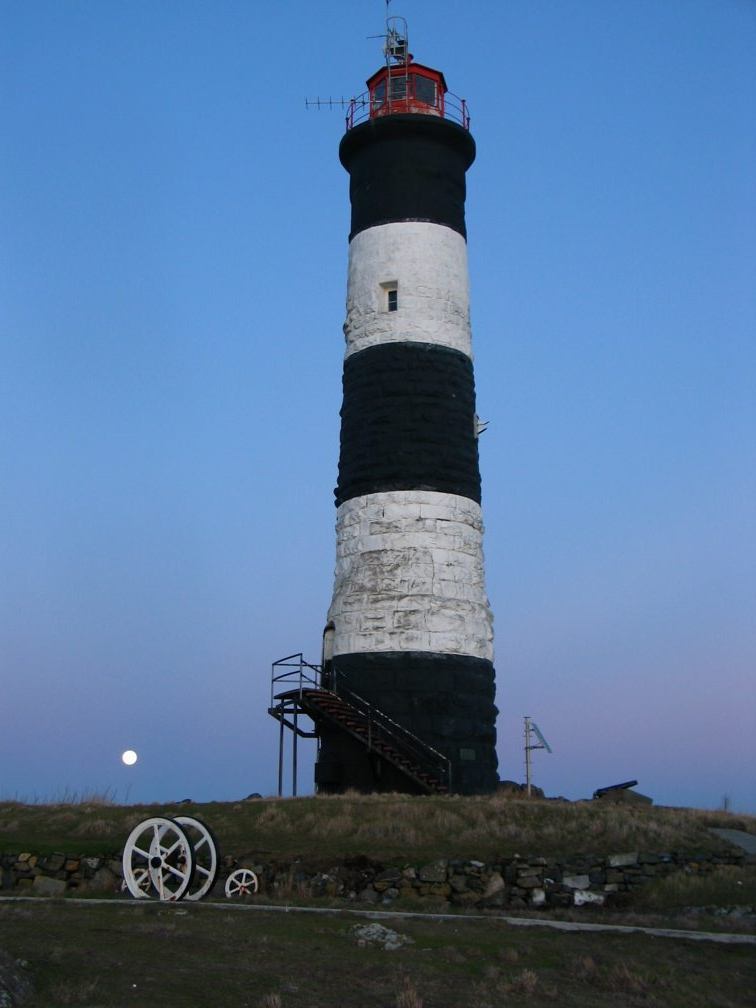Category Archives: Archived Video
Elephant Seals: up close and personal video
Mike Robinson took this video of Misery today:
Get up close and personal with a Northern Elephant Seal at Race Rocks Ecological Reserve. Lots of facts and personal observations of these magnificent marine mammals, the second largest carnivore on the planet after their Southern cousins.
David Attenborough did this in depth video of Elephant Seals from Elephant Seals /Life in the Freezer/ BBC earth
Also this video Elephant sealls of Piedras Blacas , California by Brian Caserio iis very informative.
Nereocystis luetkeana- Videos of Kelp
Kelp and color. At the end of a live underwater video session, I inadvertently left the camera “on while I was waiting in the kelp bed off the jetty at Race Rocks Ecological Reserve. It was a sunny day and the effects created by the sunlight streaming through the canopy of the forest gave this interesting effect.” GF-2003
Note: The video pauses on each clump in order to have a better view.
When Race Rocks was declared Canada’s first Marine Protected Area, Holly Arntzen offered Pearson College the opportunity to use some of her songs as video backgrounds. Her CD entitled “The Salish Sea” is about the fading beauties of the oceans and it stresses the importance of their protection.
Using the song “Saltwater” as a background, this video shows images of divers and the bull kelp, Nereocystis leutkeana, a species of brown algae present in high density throughout the summer and fall at Race Rocks. Their lamina provide a special protective canopy for a delicate ecosystem with many species of invertebrates and fish under their canopy. This video was filmed and edited by Jean-Olivier Dalphond (PC yr26) and Damien Guihen (PC yr27) in June 2001.
Elephant seal numbers
-2009-12-30 ‘Elephant Seal’, 4, ‘A more or less constant number of elephant seals in the reserve this past week. Both our adult and sub-adult males -Slash and Misery) have been spending most of their time on Great Race Island. Misery has been napping near the lighthouse for most of the week while Slash has been moving around Great Race Island and going back and forth between here and Middle Rocks where two or three females are hauled out.’, ‘Ryan’, ’08:23:02
Entangled Sea Lion gets rescued at Race Rocks
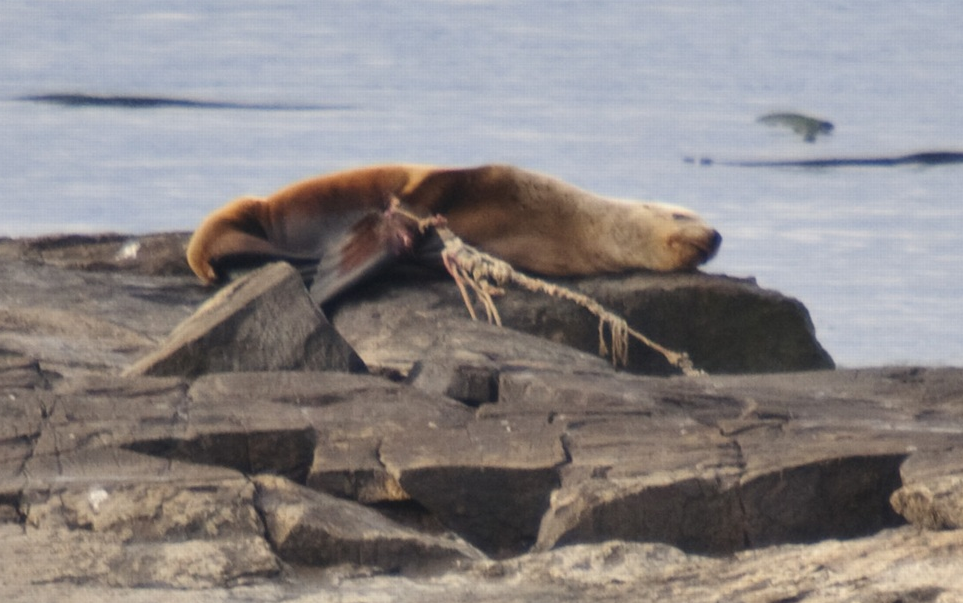
The rope had his right flipper ensnared, and it was caught on a rock leaving him tethered on the island
On December 13, 2009, Ecoguardian Ryan Murphy reported to DFO that a sea lion on Middle Island was entangled in ropes. (See Ryan’s comments below) The ropes were snagged so it could not leave the rock. A rescue was mounted by DFO and the Marine Mammal Rescue Centre of the Vancouver Aquarium on December 16. This was the first time a sea lion had been successfully released from such an entanglement.
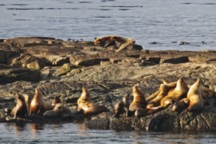 |
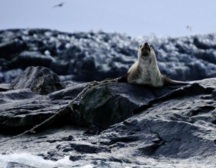 |
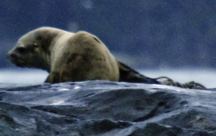 |
| On December 14 he was still there | Location of the animal (top of picture) on Middle Island | A tangle of ropes had him snared so that he could go in and out of the water but not very far. |
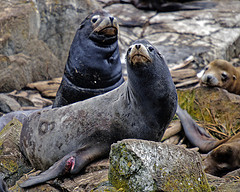 See these other images by Ryan of injured marine mammals that haul out at Race Rocks .
See these other images by Ryan of injured marine mammals that haul out at Race Rocks .
Scorpaenichthyes marmoratus : Cabezon –The Race Rocks Taxonomy
- By August of 2007, a Cabezon has taken up a territory on the Tidal Energy Piling. Photo by Chris Blondeau.
- Cabezon taken underwater at Race Rocks Head of Cabezon: photo by Dr. Armin Svoboda
Cabezon:(literally big head in Spanish ) is a benthic fish that lives among the kelp holdfasts and rocky areas, usually very close to the bottom. It is often so confident of its camouflage that it will not move when approached by divers. Note the multi colored eye. These fish will lunge at almost anything that moves on the bottom. Dissections of their stomachs reveal amphipods and small crabs, pieces of kelp (and even rocks they have grabbed when foraging for other invertebrates.)
Cabezon are normally benthic or bottom-dwellers, living among rocks and seaweeds in tide pools. Sometimes they live just below the water’s surface among the marine plants. Their coloration allows them to remain well camouflaged. Their habitat is most likely rocky, sandy and muddy bottoms, living in areas with a depth range of 0 to 200 meters. Moreover, young cabezon feed on small crustaceans like amphipods, shrimp, and crabs. The adults feed on crustaceans, marine worms and mollusks, including clams and abalone. They can swallow a whole abalone and later regurgitate the indigestible shell; therefore, their tropic level is that of a secondary carnivore. In addition, the limiting factors that will affect the development and growth of this population in a certain habitat will be the presence of enough light, temperature and the availability of food and living space
 Their maximum length and weight are 99.0 centimeters and 14.0 Kilograms respectively. This organism can be seen in the Eastern Pacific, which covers the areas from Southeastern Alaska to Punta Abrejos, in Central Baja California, Mexico. Race Rocks is located in the centre of this range. In this map we can see the range of this fish.
Their maximum length and weight are 99.0 centimeters and 14.0 Kilograms respectively. This organism can be seen in the Eastern Pacific, which covers the areas from Southeastern Alaska to Punta Abrejos, in Central Baja California, Mexico. Race Rocks is located in the centre of this range. In this map we can see the range of this fish.
Reference The National Biological Information Infrastructure (NBII) BioBot
http://www.elasmodiver.com/BCMarinelife/BCML%20Chordata.htm
|
Other Members of the Class actinopterigii/ at Race Rocks.
|
and Image File |
 The Race Rocks taxonomy is a collaborative venture originally started with the Biology and Environmental Systems students of Lester Pearson College UWC. It now also has contributions added by Faculty, Staff, Volunteers and Observers on the remote control webcams. March 15 2005- Diomedes Saldana PC -Greco The Race Rocks taxonomy is a collaborative venture originally started with the Biology and Environmental Systems students of Lester Pearson College UWC. It now also has contributions added by Faculty, Staff, Volunteers and Observers on the remote control webcams. March 15 2005- Diomedes Saldana PC -Greco |
Sebastes nigrocinctus: Tiger rockfish– The Race Rocks taxonomy
- Tiger Rockfish by Adam Harding, summer, 2010
Characteristics:
Sebastes nigrocinctus, the tiger rockfish is striped like a tiger, feature shades of pink, grey or rose, with five black or red bars radiating backwards from the eyes. Bony ridges on the head may also distinguish them from other species. In younger individuals, tips of the ventral and anal fins are darkened. Tiger rockfish reach lengths of 35 cm by 17 years of age; their maximum size is reportedly 61 cm.
Distribution and Habitat:
Since the establishment of the Rock Fish Protection area around Race Rcoks after 2002, these fish are now protected.
They occur from shallow water to 305 m. They are generally found in waters less than 30 m in Puget Sound. Off Oregon, the species is usually found at depths of 64-305 m. In the northeastern Strait of Georgia, tiger rockfish are generally captured in 21-140 m of water.
Juveniles of the species are pelagic, while adults are semi-demersal to demersal. Tiger rockfish are commonly found in caves along undersea cliffs or on the sea floor, generally in high relief areas with strong currents. It was noted that tiger rockfish are often associated with “wall” habitat. Young have been noted resting among gooseneck barnacles near Triangle Island, British Columbia. Off southeast Alaska, habitat requirements for tiger rockfish are similar to those of Yellow Eye and China rockfishes. Juvenile tiger rockfish were observed around rocky reefs, as shallow as 9 m.
Trophic interactions:
Tiger rockfish are solitary, sometimes territorial, and are known to prey upon caridean shrimp, crabs (particularly rock crabs), amphipods and small fishes like herring and juvenile rockfish in the Gulf of Alaska . This species is a generalized feeder that depends on currents bringing food items near its home territory.
Classification based on:
Hart J.L., Pacific Fishes Of Canada, Bulletin 180, Ottawa 1973, page 433
Racerocks reference:
Further References:
1) Hart J.L., Pacific Fishes Of Canada, Bulletin 180, Ottawa 1973
2) http://www.homestead.com/FishStalker/Rockfish.html
Domain Eukarya
Kingdom Animalia
Phylum Chordata
Class Actinopterygii
Order Scorpaeniformes
Family Scorpaenidae
Genus Sebastes
Species nigrocinctus
COMMON NAME:Tiger Rockfish
|
Other Members of the Class Actinopterigii at Race Rocks.
|
and Image File |
 The Race Rocks taxonomy is a collaborative venture originally started with the Biology and Environmental Systems students of Lester Pearson College UWC. It now also has contributions added by Faculty, Staff, Volunteers and Observers on the remote control webcams. March 15 2009- The Race Rocks taxonomy is a collaborative venture originally started with the Biology and Environmental Systems students of Lester Pearson College UWC. It now also has contributions added by Faculty, Staff, Volunteers and Observers on the remote control webcams. March 15 2009- |
Ode to Slash: Up close and personal with an elephant seal
We were getting so many pictures of our favourite elephant seal, “Slash” that I thought I might as well open up a page just for him. Slash has provided an excellent opportunity to study this very large marine mammal. In January 2003, two male elephant seals were hauled up on Great Race island. One was suffering from severe injuries.
This elephant seal we eventually name “Slash” and he became a docile elephant seal that hung around the main island for many years.He first sought shelter on the main Island, Great Race Rocks back in January of 2003. A boater had run over this elephant seal leaving large gashes on his head and spiral-like cuts along his body. Mike Slater, our guardian at the Rocks saw him hauled out at the end of the boat ramp and recorded the first video below. During all of 2003, he spent most of his hours sleeping up on the grassed areas of Great Race Rocks. He became very used to humans as long as one kept a respectable distance of at least 2 meters, and was prepared to move out of the way when he decided to change locations, he is very tolerant of people.
See MPA Guardian Carol Slater’s comments on these animals in the Daily log of Jan19, Feb 11, Feb13, Feb 14 and Mar 1, 2003
Here is Slash in July and August of 2003. Fortunately he has recovered well as can be seen here in this video taken by Mike Slater in July 2003
In July 2008, I took the video clip above of our resident elephant seal “Slash” asleep in one of his favourite spots behind the boathouse at Race Rocks. At 8:00 am he was in a deep sleep, interrupted only by the kelp flies on his face and a few itchy spots on his body. What was remarkable was the recurring pattern of breath holding. I made this video as a study of this aspect of what appears to be intentional sleep apnea. Since the filming was uninterrupted, one can time the various phases of a breathing cycle. Labels on the video point out the beginning and end of one such breath-holding cycle. I observed that he repeated a similar pattern for at least 15 minutes, the length of time I as was able to observe. GF.
Listen for the sounds and watch for the flaring nostrils.
You can see more elephant seal images and videos in the Elephant Seal Taxonomy.https://racerocks.ca/mirounga-angustirostris-taxonomy-and-image-file/
| “From a scientific point of view I know its bad form to anthropomorphize when considering animal behaviour. So perhaps just say that we are reserving this page for any and all aspects of the human experience with an elephant seal. |
| I thought about opening a new page after spending several days in July 2008 at Race Rocks relieving for Mike and Carol Slater when they were on holidays. I spent some quiet time with Slash, took video and many pictures and then when the spouse of faculty member Arno Dirks, Laurie Tomin took over at Race Rocks for a few days to get caught up on some writing, her e-mail provoked me to action as it had a rather nice message: ” GF
“So, back to Slash. He’s my rock star here. Not a dude of action, but of mystery and suspense. I gave up, had some lunch, and later returned to see 2 eco-tour boats ca. 10 meters off the dock and Slash–well it seemed as though he was waiting! I sat quite close, had a chat with him–for he did not seem to mind my presence at all. He looked at me occasionally, sometimes he breathed heavily through his nostrils (was he exercising them for a swim?), yep, thats all about he did. When the boats left, he moved down a bit more…and a bit more…(lots of waiting and suspense in between starts and stops). The longest and most fascinating stretch was a blubbery inch-worm movement to the water’s edge. There he sat, half in half out of the water and splashed some water on his back with his left fin. He hung out like this for about 15 minutes. Again, I sat close to him on the dock. Always with a little scramble distance–though I can’t say I was afraid at all. Wouldn’t want to scare or annoy him though! Then Slash gently slipped into the water. He looks enormous and prehistoric when he swims–also very slowly. Sometimes stopping, clearing his nostrils, looking at me. Then he swam slowly to the other side of the dock, doing much the same until he decided to swim off. Big day. I feel very lucky to be here!
See this and other pictures of Slash on Ryan Murphy’s Flickr site.
In the following years Slash failed to return in the winter. . We can assume he met his end, but we are gratefull for the many years of good memories of his presence at Race Rocks |
Underwater Materials Performance Testing
See other archived video with Pearson College Divers
| Procedure 1 | Dec 7, 2007– Purpose: To test performance and resistance to fouling of PVC junction boxes and sealant compounds |
| Procedure 2 | Jan 10, 2008– Purpose: to test resistance to fouling and corrosion of different alloys of Stainless Steel as well as various types of fasteners. |
| Procedure 3 | Purpose: to protect submarine cables from chafing on sharp rocky edges |
| Procedure 4 | Purpose: To prevent corrosion of steel Ibeam supporting and holding power and control cables through intertidal zone. |
| Procedure 5 | Purpose: To provide ballast to steel Ibeam carrying power cables in intertidal zone preventing movement during heavy surge. |
Original Engine Room at Race Rocks – (1860s)
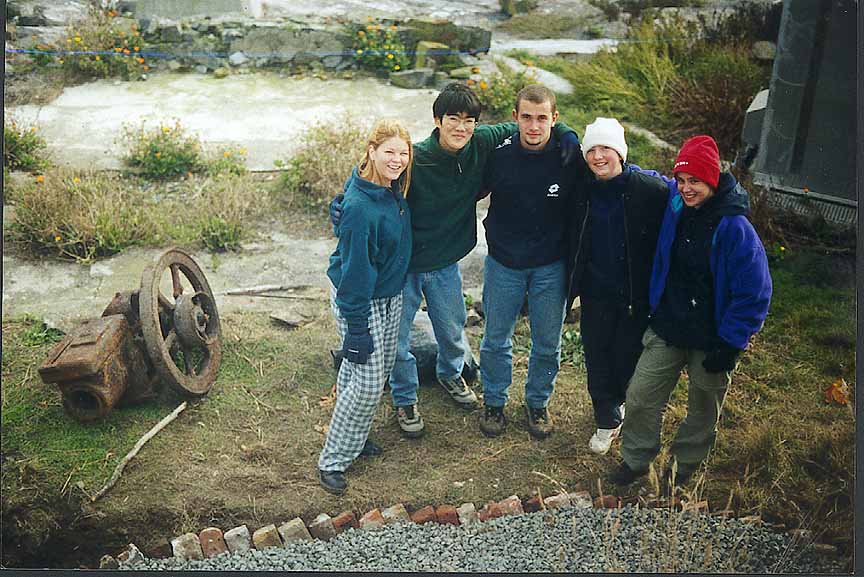 |
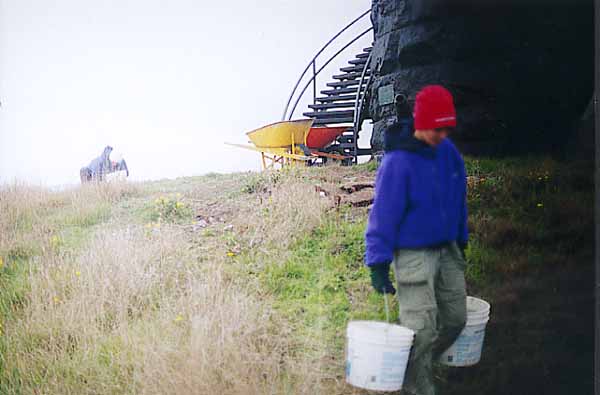 |
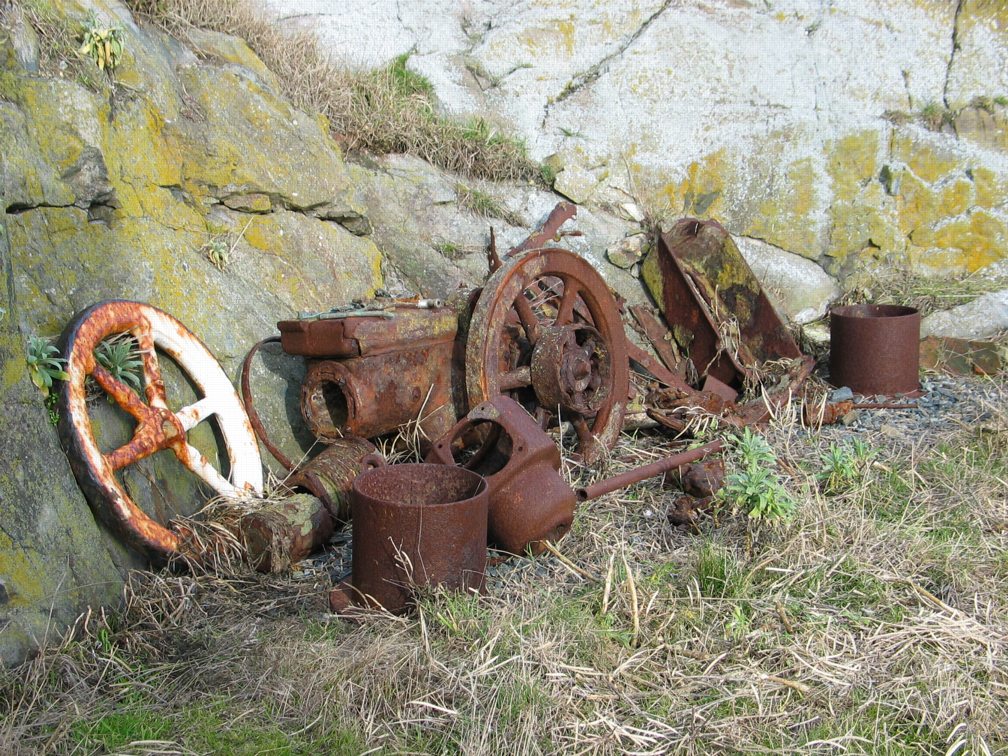 |
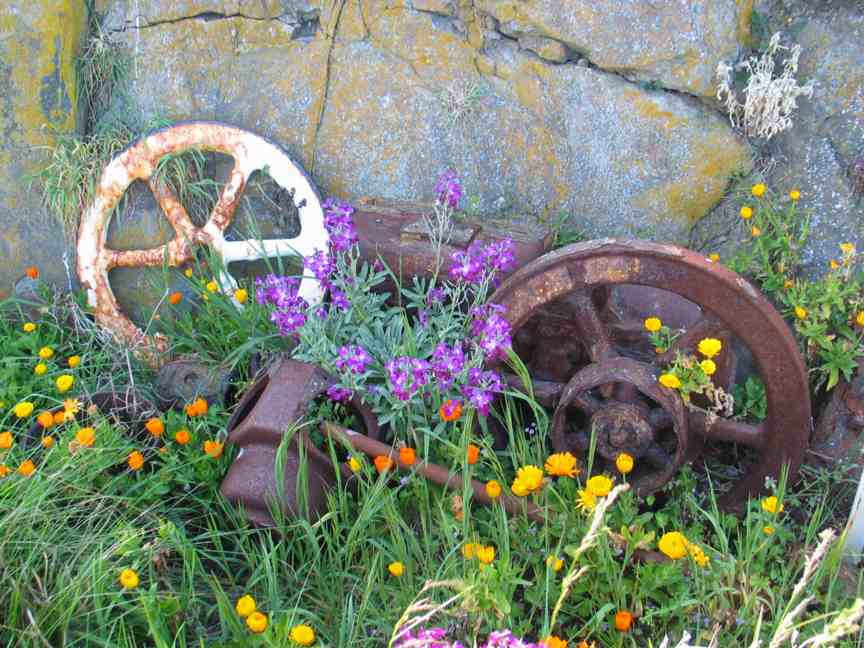 |
| Against the rock wall above the original concrete foundation of the old engine room, and below the tower, a group led by Hannah and Giovanni on one Project week did the digging out of soil, and replacement with crushed rock. . | This allowed the creation of a natural looking corner for the old historic engine room equipment. In this photo Hannah is on the bucket brigade carrying gravel. |
Some of the artifacts that had accumulated by 2005. | In 2006, the area had taken on a life of its own |
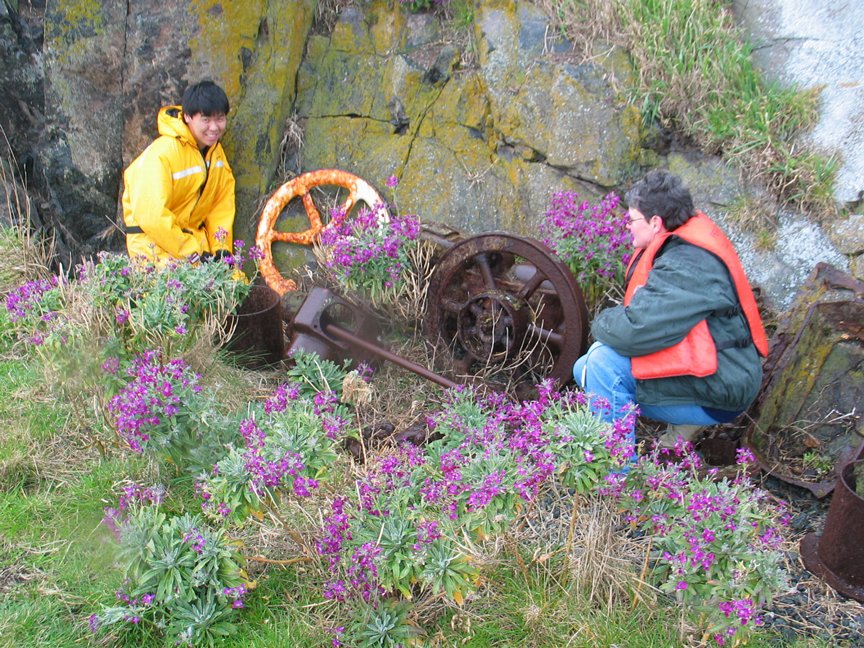 /td> /td> |
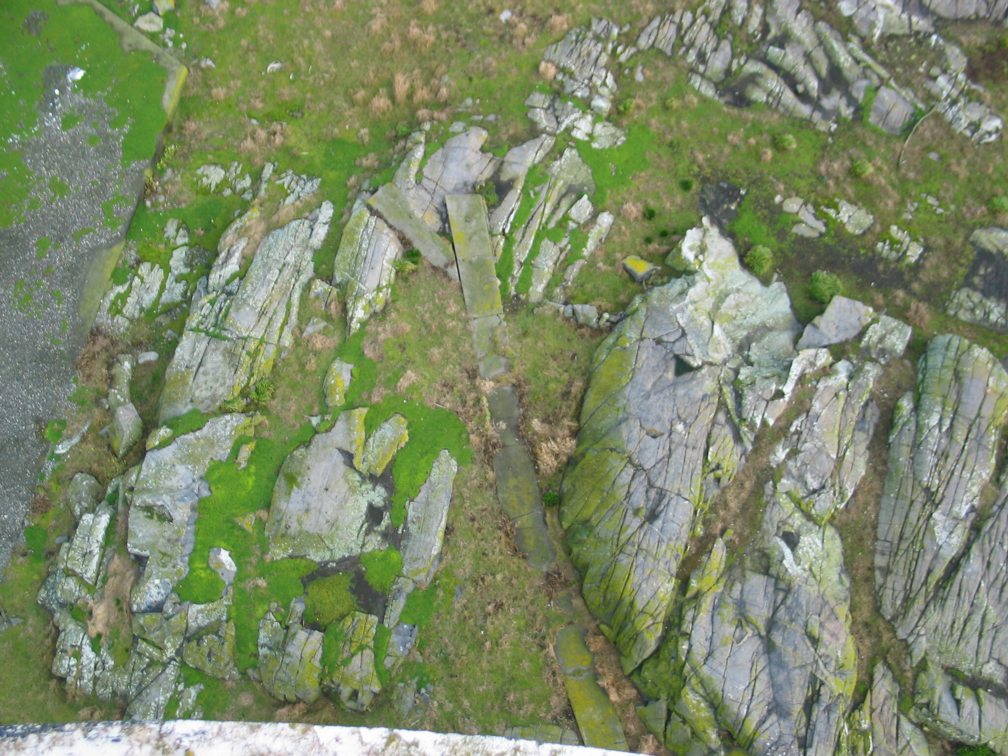 |
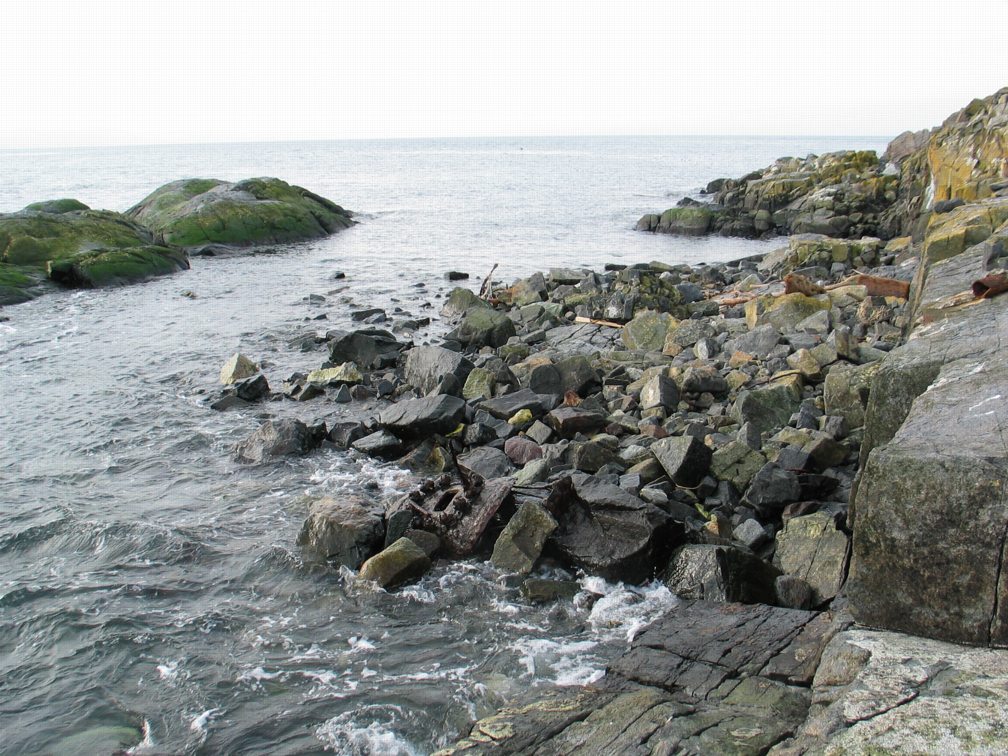 |
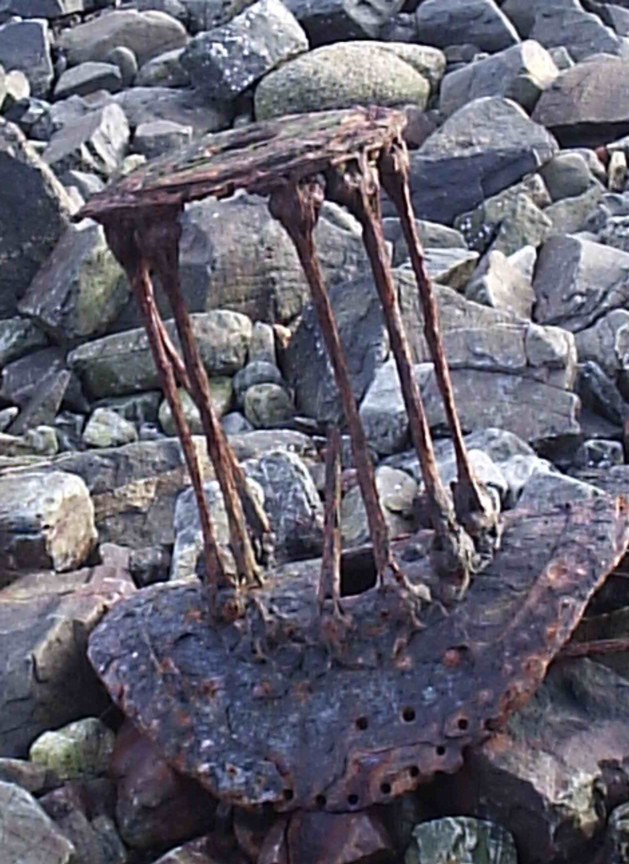 |
| Sylvia and Alex Chan examine the old engine parts. | Looking straight down from the tower on the east side, one can see the concrete pathway which we believe went to the blacksmith shop. | In the past, many old pieces of equipment were simply pushed over the side. | In 2006,the old boiler which lay rusting in the intertidal zone for many years was starting to break up. |
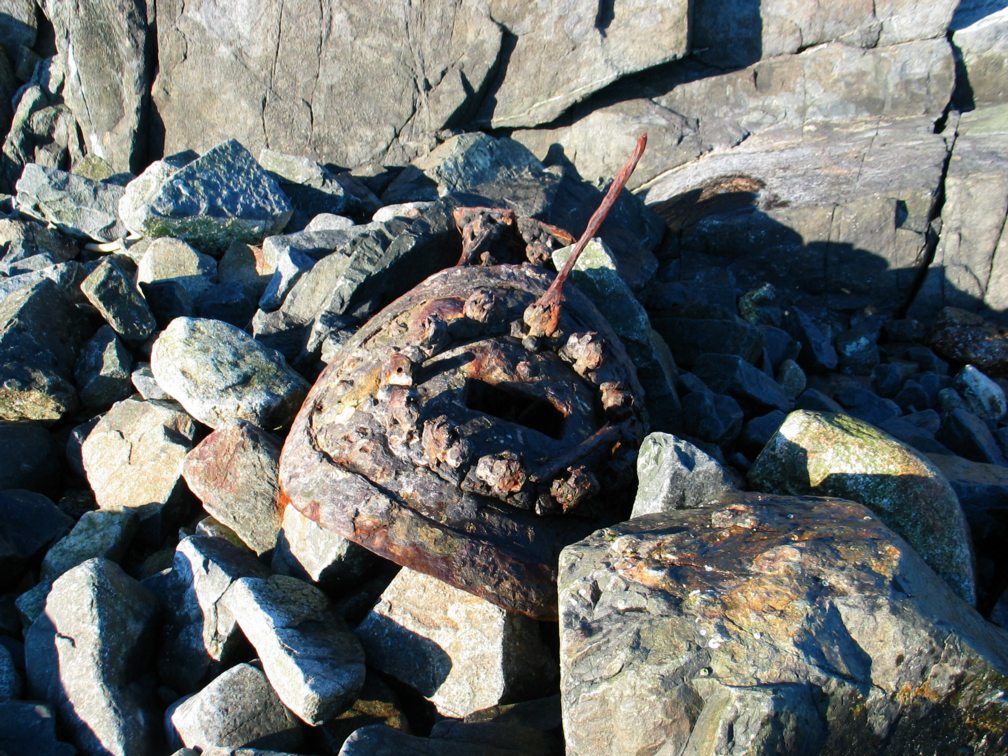 |
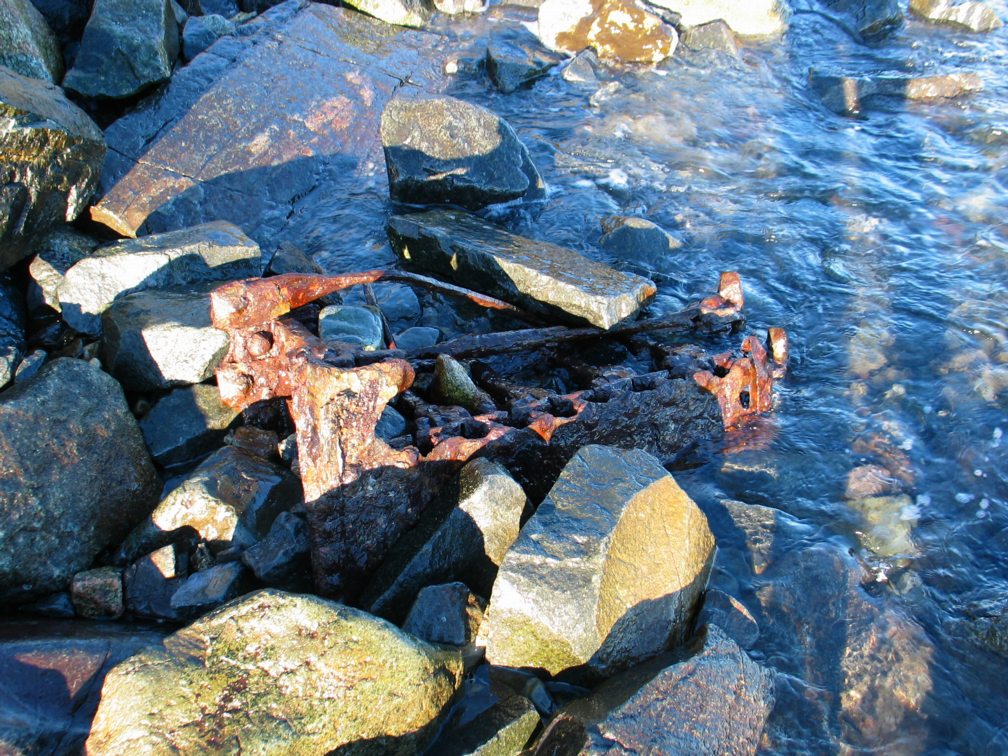 |
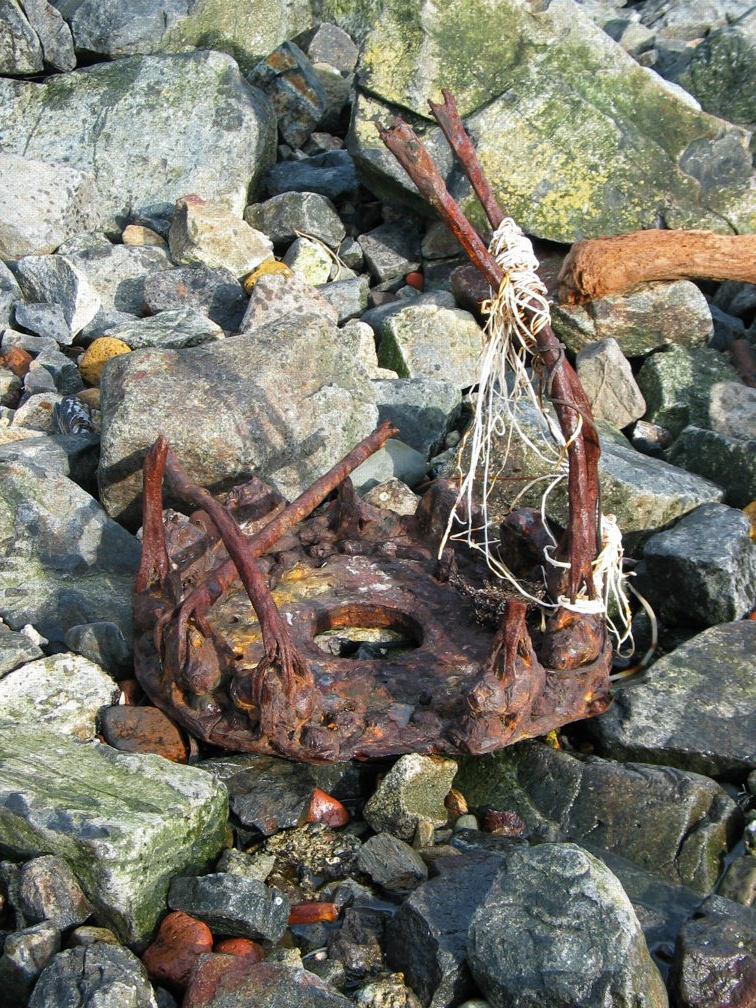 |
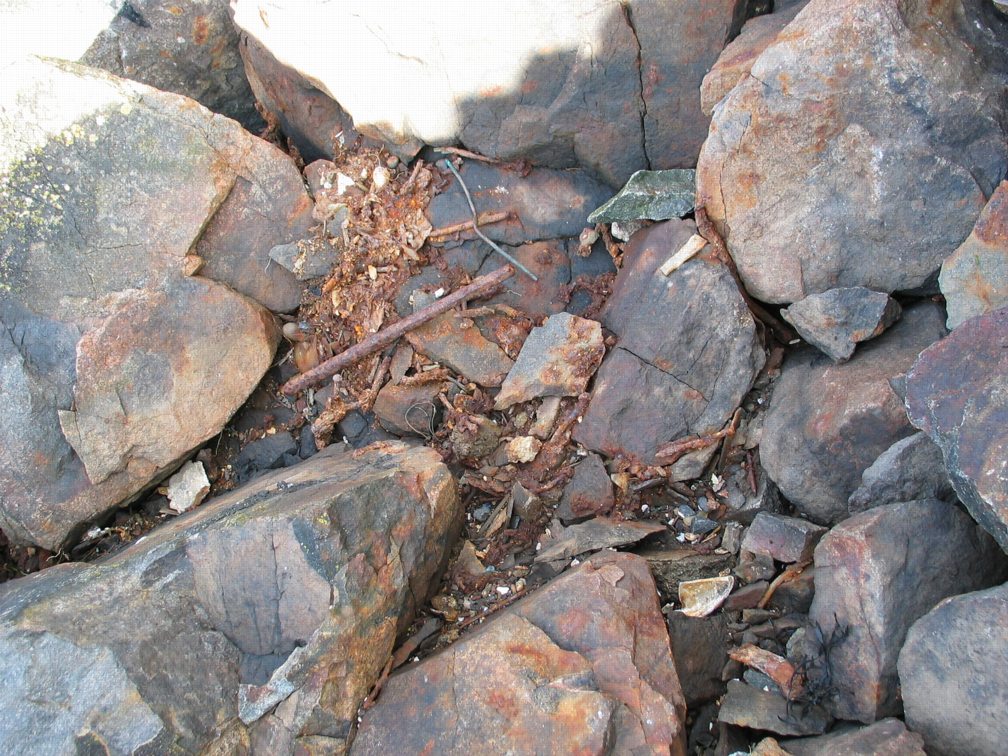 |
| The storms in the winter of 2006 dispersed the parts of the boiler | These pieces which are now small enough to move will be transferred to the collecting area. | The other end of the boiler. This was carried up to shore on February 12, 2007 by members of the racerocks.com activity.See below. | The hurricane in December 2006 moved rocks exposing more rubble below the energy building. |
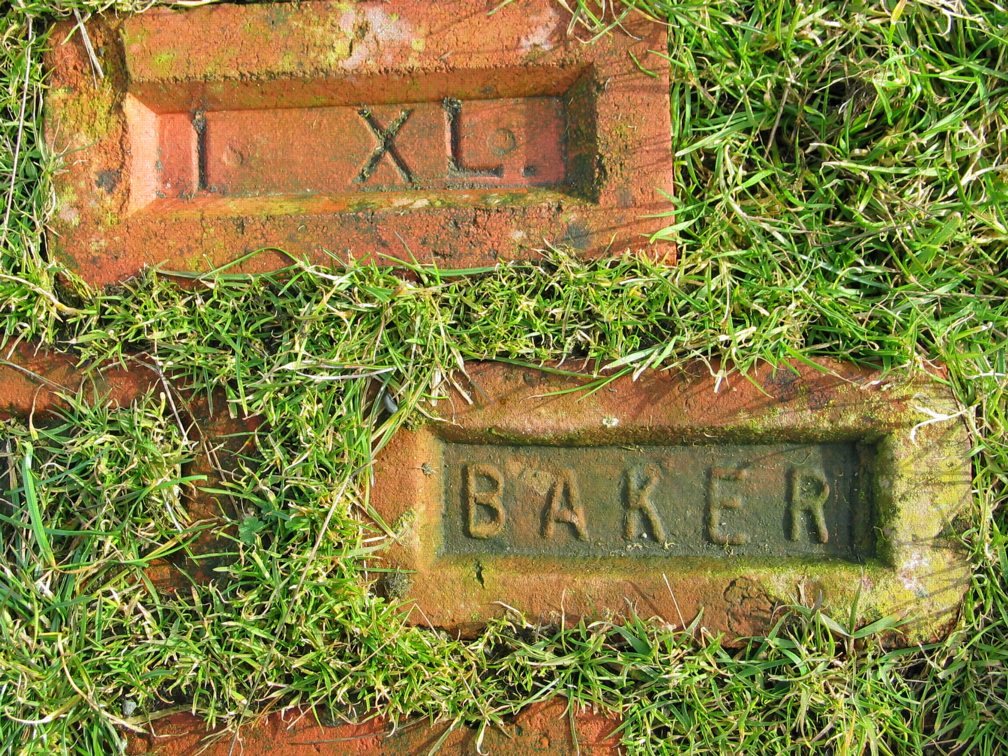 |
|||
| Link to the file on bricks of Race Rocks |
The last of the rusted parts of the old boiler from the engine room shown above are carried up by Pearson College students in the Race Rocks Activity in 2007 to be part of the collection of other old parts stored at the base of the tower.

